-

Mating Mandarins
Only a few flaps of the fin from the pier, you can observe the Mandarinfish (Synchiropus splendidus) at twilight. -

Decorator Crab
Amazing how the corallimorph decorator crab (Cyclocoeloma tuberculata) hides itself from predators. It glues pieces of anemones and corals on its body, where they grow further until the crab is fully covered. -
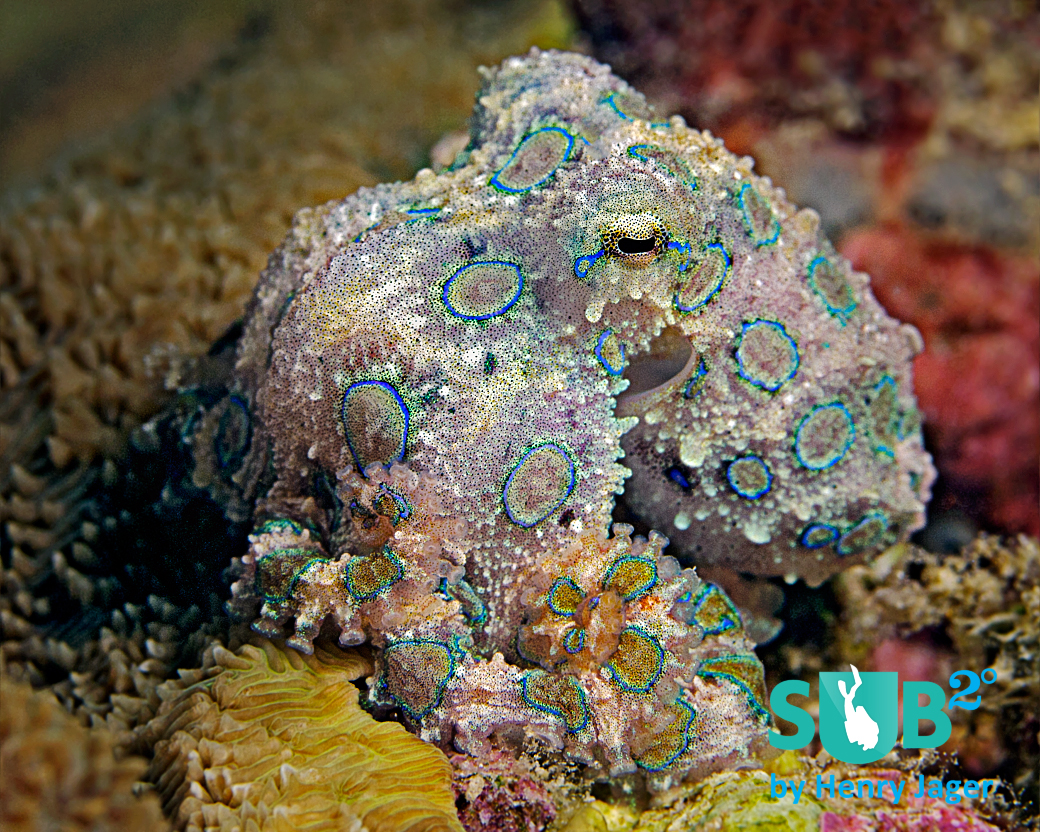
Blue-ringed Octopus
The Blue-ringed Octopus (Hapalochlaena lunulata) belongs to the most venomous marine life. -
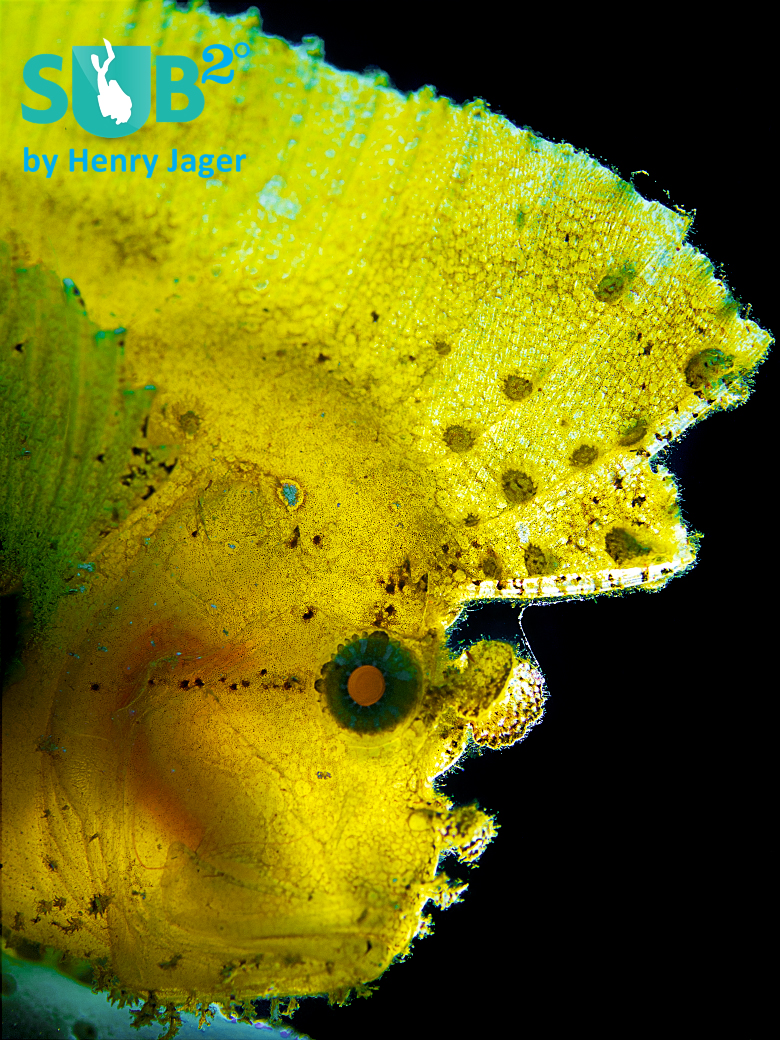
Backlit Leaf fish
At the Kasai Wall, you can spot Leaf fishes on top of table corals. This gives you room for creative photography. -

Cup Coral Portrait
No, this is not a flower; it's an animal- the gracile Cup Coral (Dendrophyllia gracilis). Does it remind you of the little shop of horrors?
The Kasai Wall
The Kasai Wall
Besides the Sardines and the Cathedral at Pescador Island, Moalboal (Philippines) has a lot more to offer regarding critters and great dive spots. One place that is extremely rich with ocean life is The Kasai Wall. It's the house reef of Kasai Village and the top spot in the region. Not to mention, it's found on the regular program of many other dive bases around. I have seen so many house reefs, and I can say this is a special one that is really worth visiting.
The dives start just at the newly extended pier. A very good place to be is just around the pier but you can also dive a few meters to the south to spot some interesting life. The Kasai Wall is attractive during the day as well as during night and twilight dives.
Twilight is Mandarinfish Time
At twilight, a fantastic spectacle begins just beside the pier. A few square meters of corals build the home for the Mandarinfishes (Callionymus splendidus). We all know how shy they are, and there are only a few spots in the world where you can observe them that close to your resort.
Mandarinfish got their name from their vibrant colors, like the clothes of the ancient Chinese mandarins. The Mandarinfishes come out every evening, and if you are lucky, you can see them mating.
Night Dives with the Blue-Ringed Octopus
One of the most venomous creatures in the oceans is the Blue-ringed octopus (Hapalochlaena lunulata). We spotted it during one of our fantastic night dives. The one you see in the picture is quite relaxed. When they are agitated, their soft brown areas darken. Then it's time to respect the flight zone.
Normally, Blue-ringed octopuses hide first, then try to escape. They start to pulse, and with fast, multiple changes of colors, they escape. Only when escaping is not possible do they attack humans.
Panagsama Beach
The Kasai Wall is the top spot of the Panagsama beach in Moalboal, Philippines. Only small resorts and restaurants are here; no mass tourism, only divers. One reason is the missing sand on the beach. To enjoy a white beach, you have to drive a few kilometers. One of the top dive resorts is Kasai Village Dive & Spa Resort. The Kasai Wall is located just in front of this resort.
Great Variety of Marine Life
The Leaf fish, or more correct the leaf scorpionfish (Taenianotus triacanthus), are common around the Pacific area. I saw them at the Kasai Wall, in the most photogenic poses than anywhere else. They presented themselves so nicely that I had no other choice than to indulge in a creative photo shooting.
The region around Moalboal is famous for its pygmy seahorses, but also "normal" sized ones can be found at the Kasai Wall. We spotted a black and a yellow Hippocampus sp.
Night dives at the Kasai Wall are very relaxing. In shallow water, you can spot amazing creatures like the corallimorph decorator crab. It's a crab with a special habit of hiding itself from its predators. It glues pieces of anemones or corals on its body, on which they will continue to grow.
The one in the picture is a middle-aged crab. As it grows older, the anemone will cover its whole body like a cape. It's very interesting to observe all the species living on such decorator crabs. And there are many different decorator crabs like the hydroid decorator crab that lives in the reef holes of the Kasai Wall.
Many other crustaceans live in the Kasai Wall. Around the pier, the biodiversity of crustaceans is amazing. Coming back from a night dive to the pier, thousands of pairs of luminous eyes watch you. They belong to the countless shrimps sitting in every little hole.
During our night dive, we could see how beautifully colored this wall was. The gracile cup corals (Dendrophyllia gracilis), which were about 2.5 cm (about 1 inch) in size, opened and showcased their flower-like beauty. They belonged to the stony corals and fed on plankton. Sea anemones opened as well and used their tentacles to collect food.
The Dive Spot
Despite the fact that the dive spot offers deep diving down to 37 meters, the most fascinating marine life at the Kasai Wall lies in shallow water like the schooling squids, reef fishes, pipefishes, ghost pipefishes, and more. The Kasai Wall is easy to dive and therefore also suitable for beginners.
Apart from the critters, you can meet the big stuff at the Kasai Wall. Turtles are frequently encountered, and occasionally a whale shark. By having all this amazing biodiversity in one single dive spot, it's obvious that the Kasai Wall is a ‘must-dive’ spot.
Further Reading
All Other Articles By Henry Jager
Overview of Scuba Diving in Philippines
Directory of Dive Sites in Philippines
Featured Posts
-
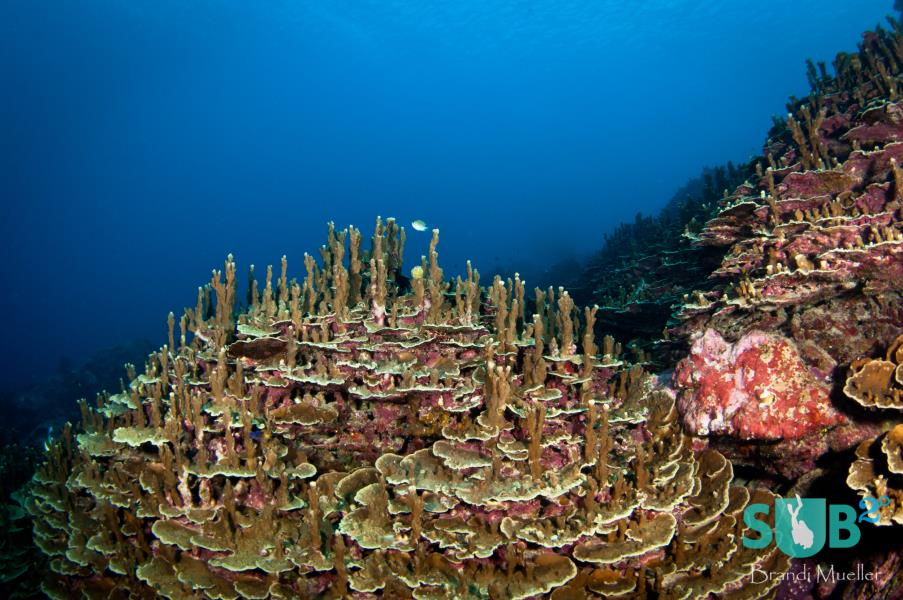
The Unique Diving of Guam
Often overlooked, the island of Guam is surrounded by fantastic diving. White sand beaches and calm, clear waters invite divers to explore the ocean and see the healthy coral and plentiful fish populations below.
-

Papua New Guinea's Milne Bay
Papua New Guinea is one of the world's best dive destinations and Milne Bay offers fantastic reef diving and muck diving in the same location. Clear waters and phenomenal creatures make for an excellent dive trip that’s enti...
-

Sharks of the Bahamas
Shark feeding dives are no longer just for the avid diver or thrill seekers. Bahama's crystal clear waters are the best environment to come nose to nose with a frenzied school of sharks after they smelled the chum.
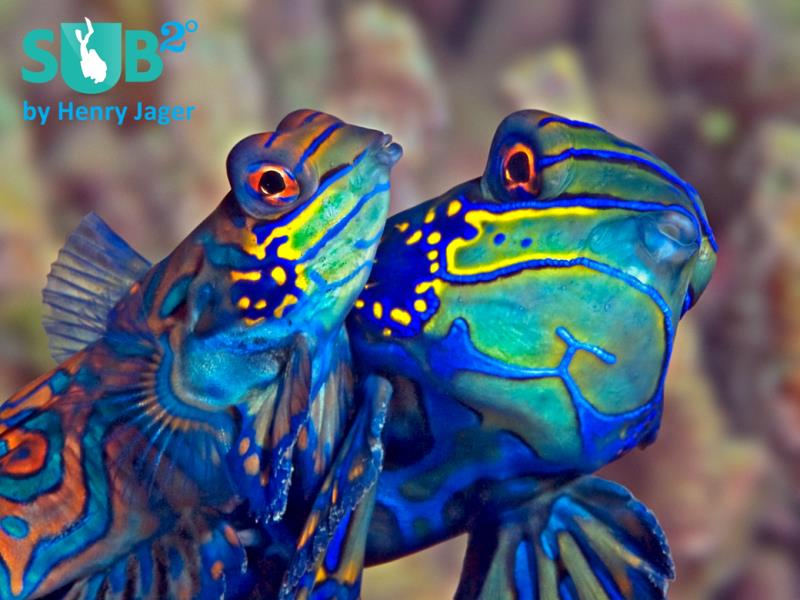
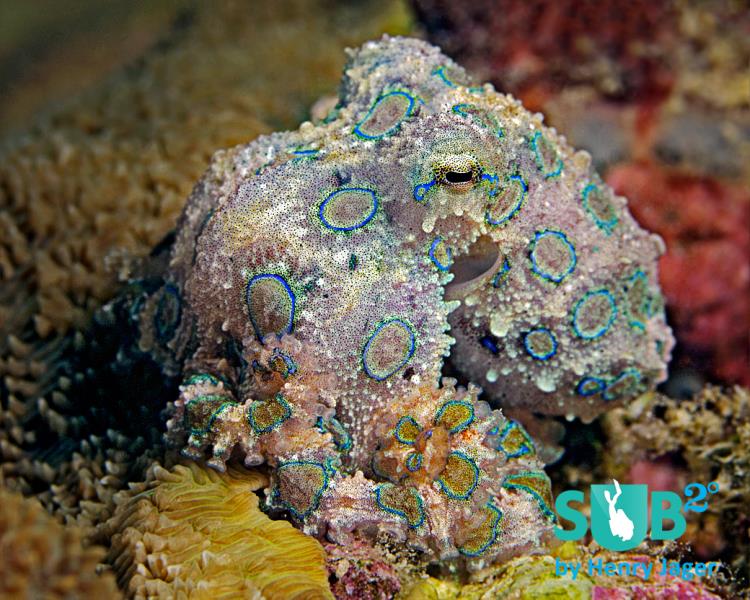
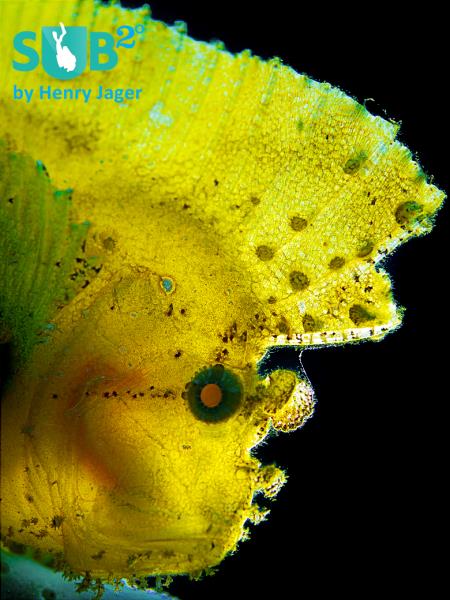
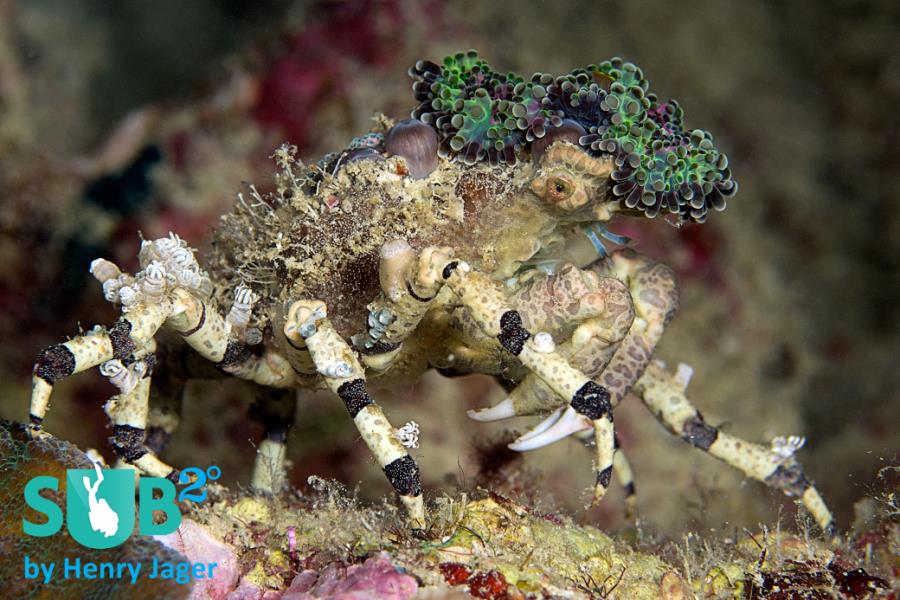
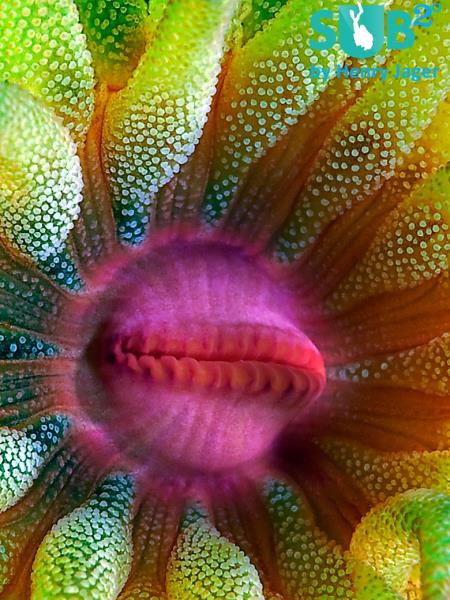


Load more comments
Lauren Duffin 10/17/2013 9:40:43 PM These fish are beautiful, I used to have some in a saltwater tank at home. Check out my blog at http://laurenduffin.blogspot.com/